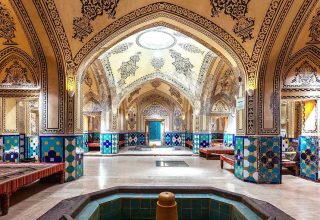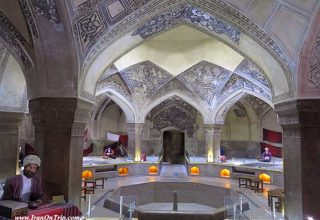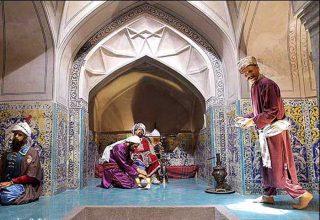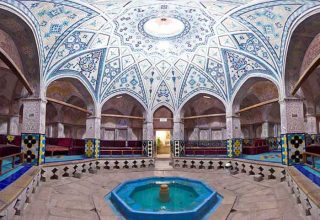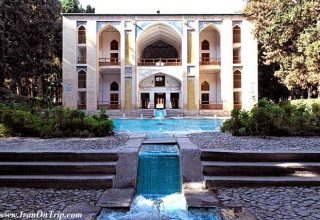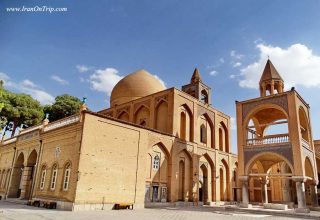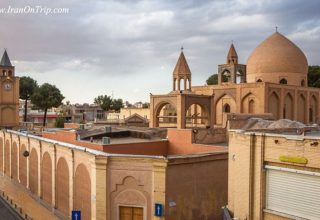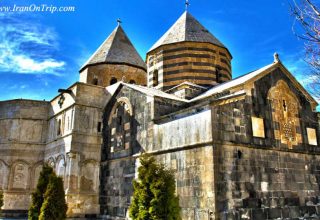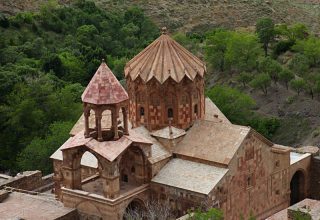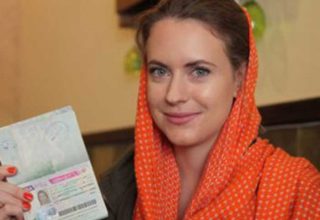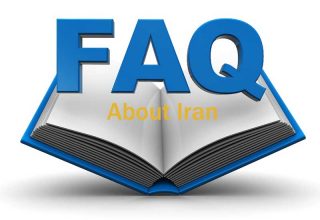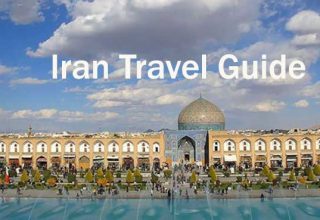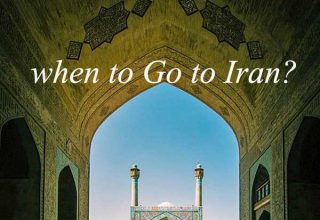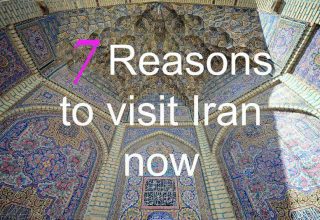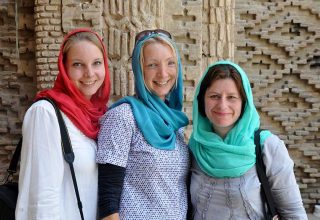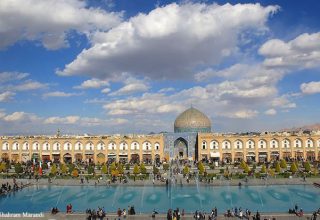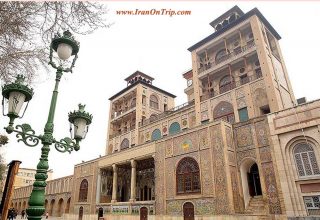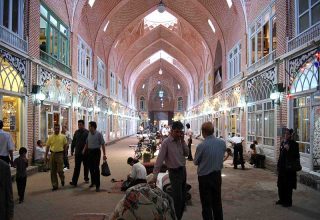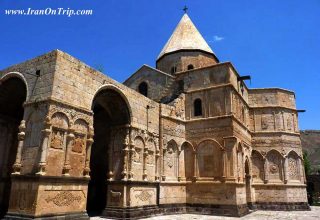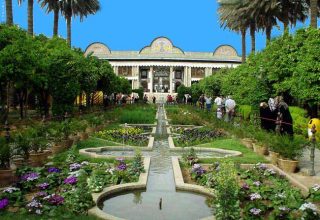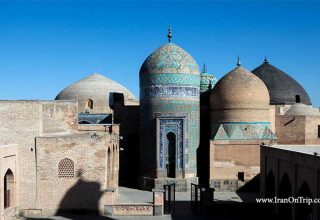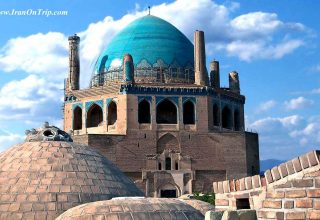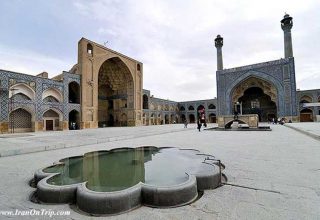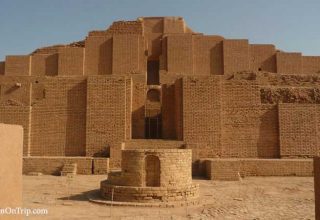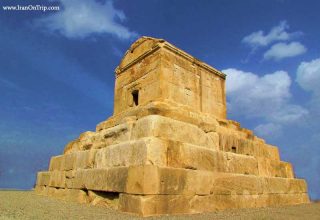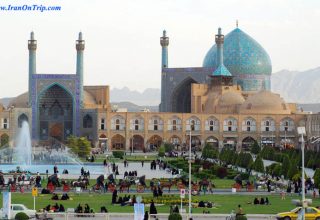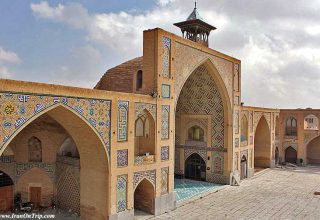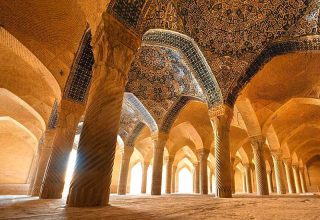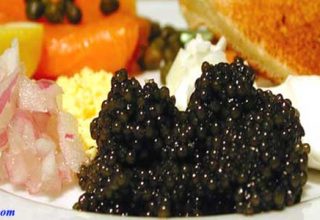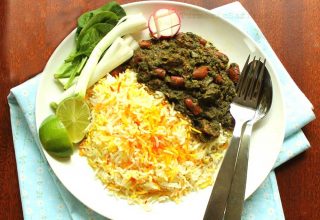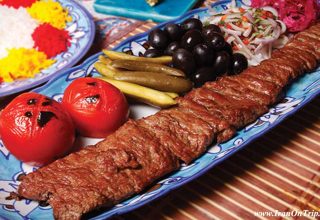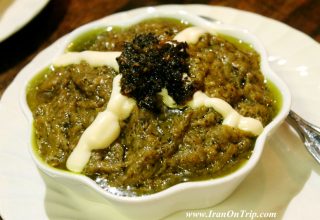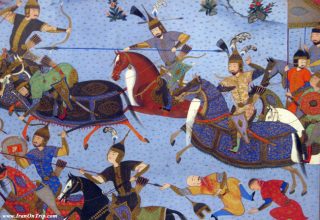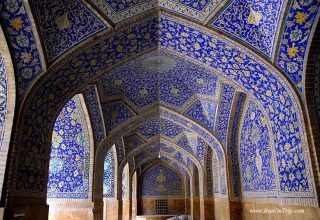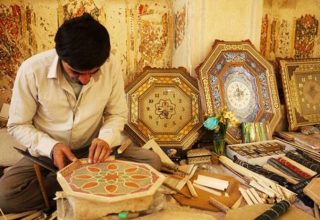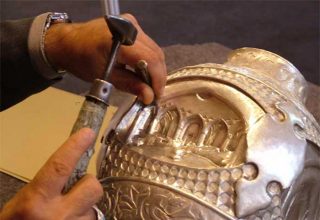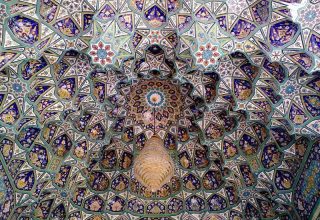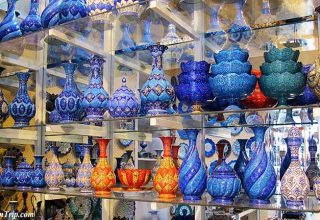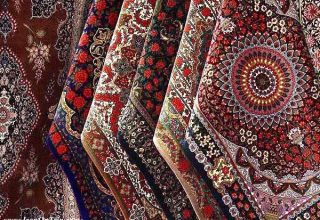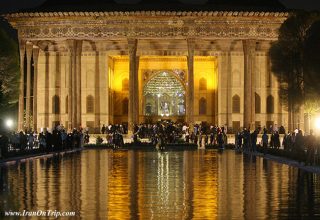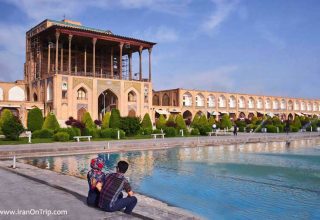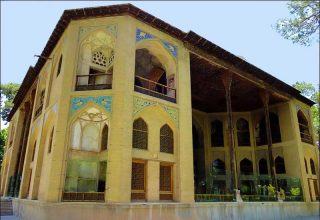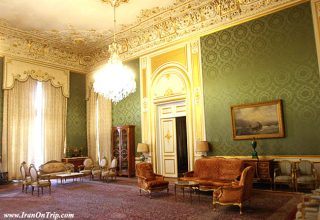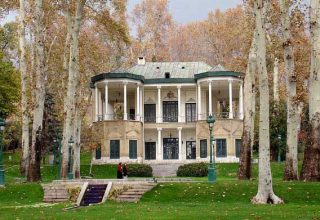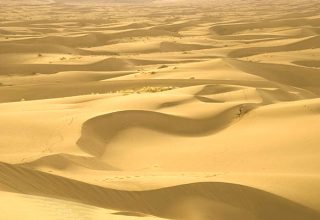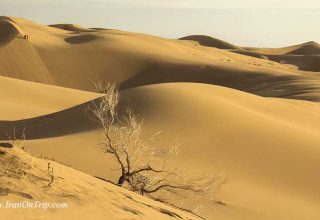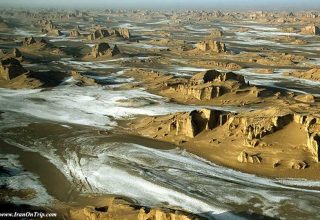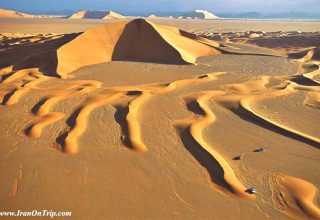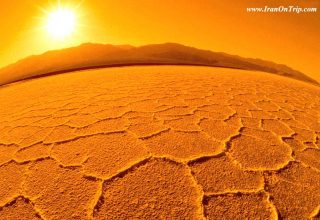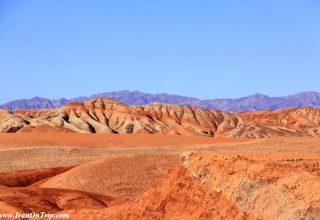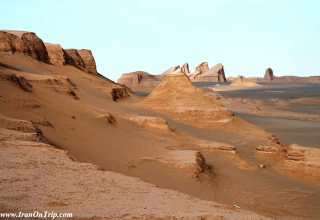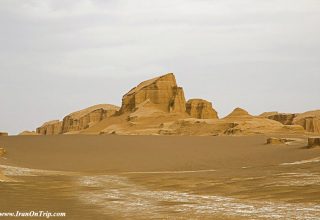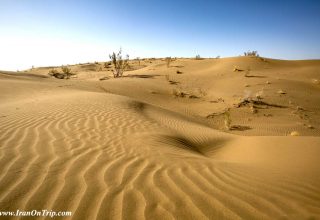

Ganjalikhan Bath house(Anthropology museum)
This bath is a collection of art, architecture and using different materials with a suitable space which attracts people to itself. The architect of bath and in general Ganjali khan complex is a Yazdian architect named “Ostad Mohammad Soltani” who indeed knew the political, economical and cultural conditions of its time. Ganjali khan bath is a wonderful work, that with its beautiful tile-works, paintings plaster-works pats the eyes of every visitor. Baths are included among the inseparable part of city’s building and are the main and important parts of Islamic cities and villages. The entrance to the Ganjali bathhouse is located along a section of Ganjali Khan Bazaar.The bathhouse was converted into an anthropological museum in 1971. In the closet section and main yard of the bath there are many lifelike statues. These statues were designed at Tehran University’s faculty of fine arts in 1973 and then transferred to this museum.

Gang Ali Khan bathhouse is the spectacular place for every tourist who visits Kerman. This bathhouse is a mixture of architectural art, using different materials and symmetrical space. Gang Ali Khan bathhouse is one of the oldest ones in Kerman that was constructed by the order of Gang Ali Khan in 1020 L.H, it is at the southern side of Gang Ali Khan complex. This building is decorated with tile setting, painting plasterwork, cornice and fine practice. The entrance transom of this bathhouse is decorated with beautiful painting from Safavid dynasty. The architect of this complex and bathhouse was Ostad Mohammad Sultani from Yazd. Gang Ali Khan bathhouse with the length of 16m and the width of 30m is 1380m2 in area. Courtyard of garmkhaneh (a covered area with radiant heat floor in where people wash their bodies)is 6/25m in length, 7/5m in width and 44/8 m2 in area.

Hammam-e Ganjali Khan or the bathhouse belonged to Ganjali Khan, is the most interesting part of Ganjali Khan Complex for visitors. It used to be a public bathhouse until three decades ago.The Hammam or Ganjali Khan public bathhouse was built right in the middle of Kerman Bazaar.Its treasure includes various wall paintings and a fine collection of Iranian handmade glassware, woodworks and marbles.The old Hammam has a very detailed and logical architecture specifically designed for a public bathhouse. It has various chambers each open to another one, in the form of a complete circle, to save the heath. The clever architect designed the passages and the corridors curved to stop the outside cold weather to storm the bathhouse. The principal doorway adorned with murals depicting animal scenes. Its demolished plaster works and paintings of Safavid era were restored in 1332 A.H.by a man called Mirza Shokrollah who, inspired by Qajar paintings, could finally manage the restoration. There is a marble table at the entrance that poetically reveals the age of the building, which is 1020 A.H.The staggered entrance gives access to a first chamber surrounded by six spacious apses. Close to a pool for first ablutions, bathers could undress and have a rest. These narrow passages led to a row of dome covered halls, each to which served

particular purposes such as massage, hot and cold baths, etc.Hammam-e Ganjali Khan has recently been converted into an anthropology museum with true-to-life wax figures bringing back the memory of everyday scenes of the past.Today, the old Hammam assumed the form of an anthropological museum of waxed men performing various stages of their ablutions. Special locally made bars of soaps, wooden combs, shoes and other objects are also displayed.
The Sculptures in Gang Ali Khan Bath House

The sculptures were designed in Fine Arts College in Tehran University and were transferred to this bathhouse. They show the old custom of bathing and also traditional clothes of Kerman’s people.
Anthropological Museum in Gang Ali Khan Bath House

This old bathhouse was reconstructed in 1350 and used as the anthropological museum
Some things that used in the traditional bathrooms such as special dishes have placed in it. Furthermore, there are pictures and sculptures that show custom of bathing such as phlebotomy and haircutting.
old Bathrooms of Iran – Historical Bathrooms of Iran – Historical Bathhouses of Iran – Bathrooms of Iran – Bathrooms of Iran – Iranian Bathhouse


